In the prehistoric ages, some animals were much bigger than today’s counterparts – including crocodiles. Crocodiles have long been some of the most feared and respected creatures on the planet, and their prehistoric ancestors were no different. Some of the largest and most terrifying crocodiles to ever exist walked the Earth millions of years ago, making even the largest modern crocodile look like a mere lizard by comparison. From the massive Deinosuchus to the impressive Sarcosuchus imperator, this article will explore eight of the largest and most impressive prehistoric crocodiles ever discovered, giving readers a glimpse into a long-lost world of giant reptiles and ferocious predators.
List of Largest prehistoric crocodiles ever lived
Before reading the largest prehistoric crocodile list below, keep in mind that the list given below can change at any time with any newly found fossil. Due to the absence of a complete enough skeleton in most cases, the numbers given are mostly estimates.
And how are these estimates made? A common method to estimate the size of crocodiles and crocodile-like reptiles is the use of the length of the skull measured in the midline from the tip of the snout to the back of the skull table since in living crocodilians there is a strong correlation between skull length and total body length in subadult and adult individuals.
And here’s the list.
8. Sarcosuchus imperator (Up to 9.5 meters [31 feet])
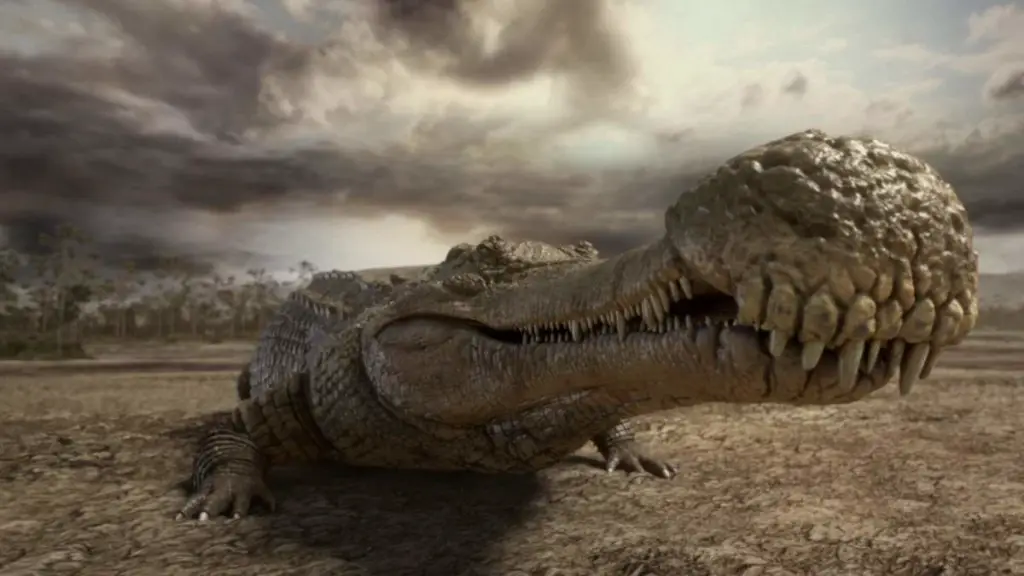
Sarcosuchus, popularly known as the “super croc” is an extinct genus of crocodyliform and a distant relative of the crocodile that lived 112 million years ago.
Most sources on the web claim that the Sarcosuchus imperator was the biggest prehistoric crocodile that ever lived, but recent findings suggest that it was not the case. Recent estimates suggest that the largest S. imperator specimen was 9.5 meters (31 feet) in length and had a body weight of about 4.3 metric tons (4.7 short tons). Still huge compared to today’s crocodiles, but not the largest prehistoric crocodile anymore.
Fish are easy prey for small crocodiles but as they grew larger they would need more sustenance to survive so they may have begun to incorporate dinosaurs into their diets as well. As seen in crocodiles today, Sarcosuchus may have also left the water to scavenge the kills of the larger dinosaurs as well.
Although it’s unlikely that Sarcosuchus deliberately hunted dinosaurs for lunch, there’s no reason it had to tolerate other predators that competed with it for limited resources. A full-grown SuperCroc would have been more than capable of breaking the neck of a large theropod, such as, say, the contemporary, fish-eating Spinosaurus, the biggest meat-eating dinosaur that ever lived.
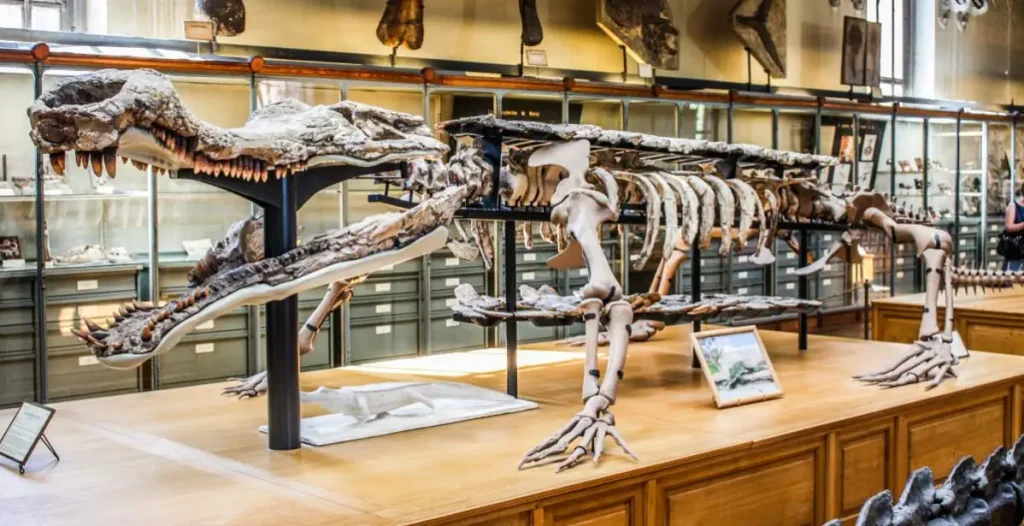
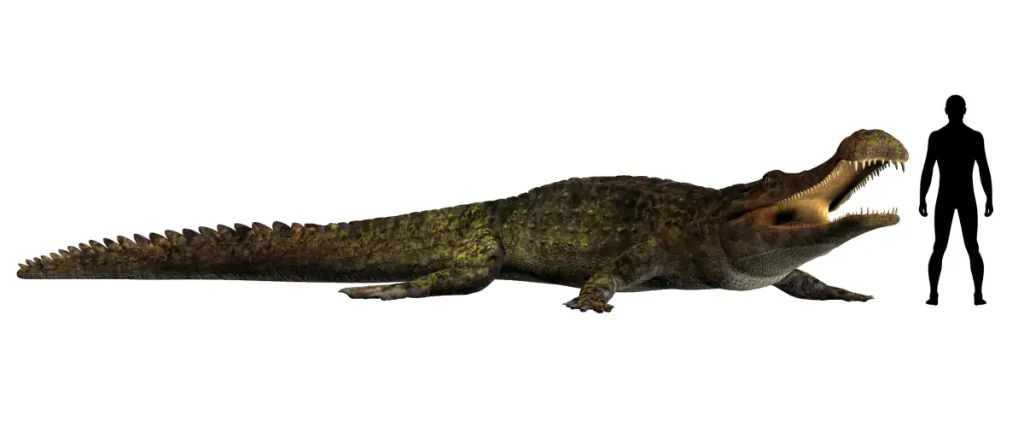
7 and 6. Euthecodon brumpti and Gryposuchus croizati (~10 meters / ~33 feet)
Euthecodon
Gryposuchus is an extinct genus of gavialoid crocodilian. It was also a slender-snouted crocodile-like Euthecodon. Fossils have been found in Argentina, Colombia, Venezuela, Brazil, and the Peruvian Amazon. The genus existed during the early and middle Miocene epoch. One recently described species, G.

5. Purussaurus (10.9 meters / 36 feet)

Purussaurus was actually a caiman (see notes 1). It lived in South America during the Miocene epoch, 8 million years ago. It is known from skull material found in the Brazilian, Colombian, and Peruvian Amazonia, and northern Venezuela.
Purussaurus is one of the largest known
The large size and estimated strength of this animal appear to have allowed it to include a wide range of prey in its diet, making it an apex predator in its ecosystem. As an adult, it would have preyed upon large to very large vertebrates with no real competition from sympatric, smaller, carnivores.

4. Rhamphosuchus (up to 11 meters / 36 feet)
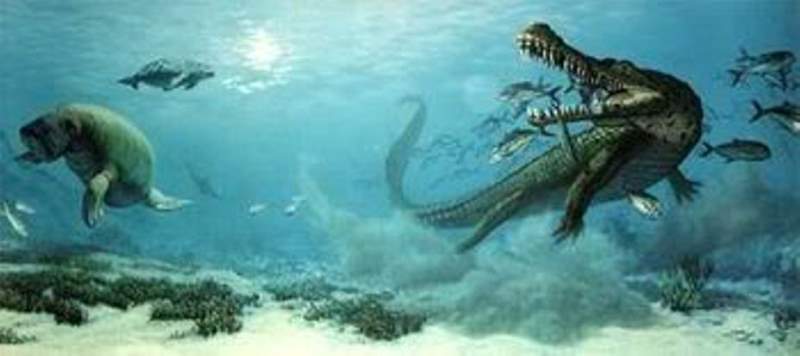
Previously, it was believed that the Rhamphosuchus was the largest prehistoric crocodile ever, but not anymore: for many years scientists believed that it was one of the largest, if not the largest crocodylian that ever lived, reaching an estimated length of 15 to 18 meters (49 to 59 feet) and 20 tons in weight. However, a more recent study suggests that the animal may have been 8-11 meters (26-36 feet) in length, and therefore is not the largest known crocodylian.
Rhamphosuchus inhabited what is now the Indian sub-continent in the Miocene. It is only known from incomplete sets of fossils, mostly teeth, and skulls.
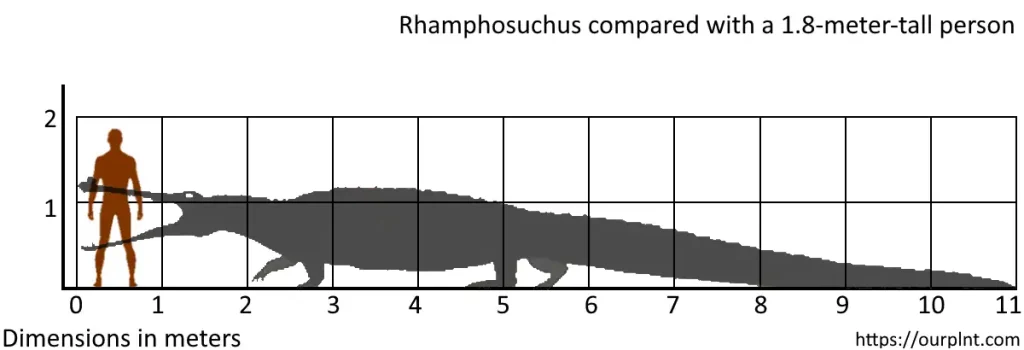
3. Mourasuchus (up to 12 meters / 39 feet 4 in)
One of the largest prehistoric crocodiles, Mourasuchus is an extinct genus of giant crocodilians from the Miocene of South America. With an estimated length of up to twelve meters long, Mourasuchus was one of the biggest crocodiles of all time.
However, despite this gigantic size, it had a relatively weak jaw and skull construction combined with quite small teeth for its size: the skull has been described as duck-like, broad, flat, and very elongated.
These two things do not portray an apex predator that wrestled large prey into the water. It presumably obtained its food by filter-feeding; the jaws were too gracile for the animal to have captured larger prey. It also probed the bottoms of lakes and rivers for food.
Fossils have been found in the Fitzcarrald Arch of Peru, where it coexisted with many other crocodilians, including the giant gharial, Gryposuchus, and the alligatorid Purussaurus. The great diversity of crocodylomorphs in this Miocene-age (Tortonian stage, 8 million years ago).

2. Deinosuchus (up to 12 meters / 39 feet 4 in)
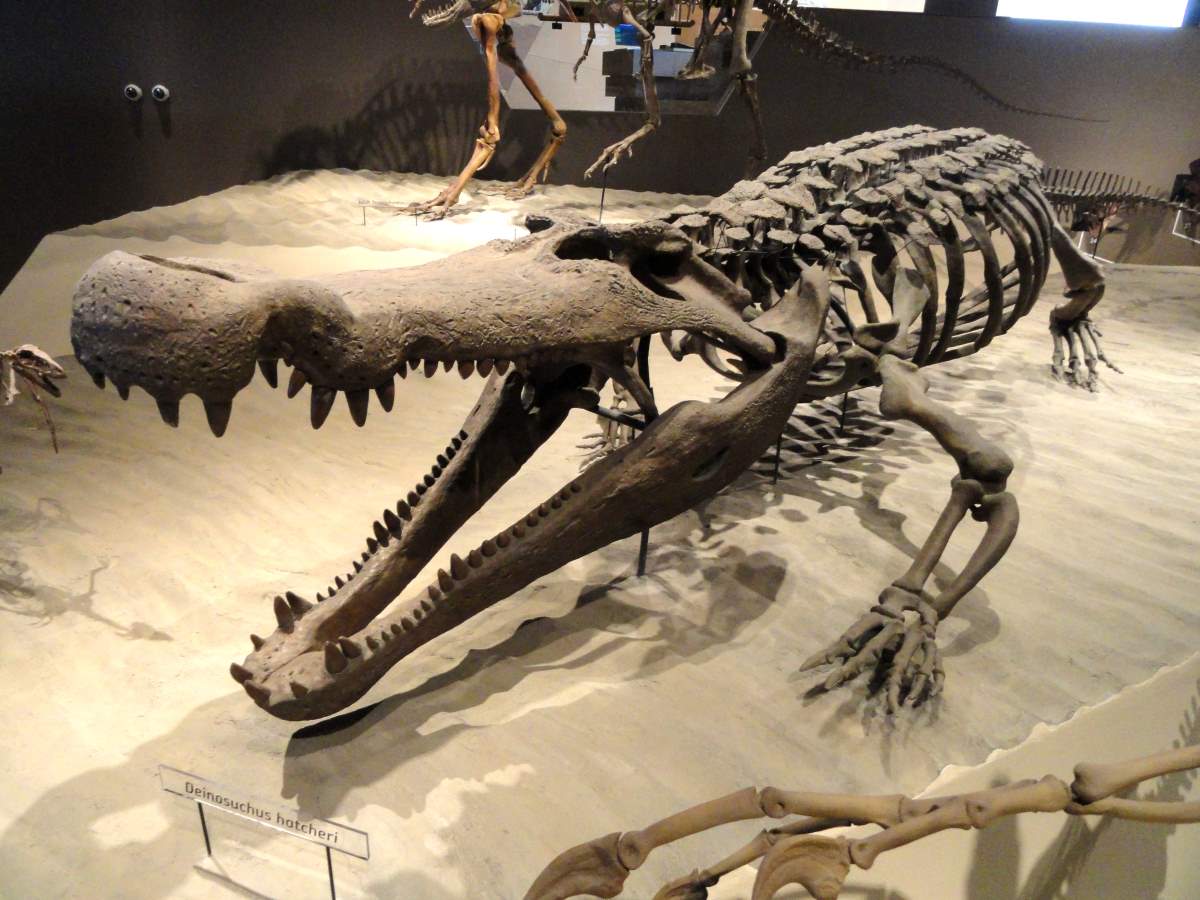
Deinosuchus is an extinct genus related to the alligator that lived 80 to 73 million years ago (Ma), during the late Cretaceous period. The name translates as “terrible crocodile” and is derived from the Greek deinos, “terrible”, and soukhos, “crocodile”. The first remains were discovered in North Carolina (United States) in the 1850s; the genus was named and described in 1909.
Deinosuchus was far larger than any modern crocodile or alligator, with the largest adults being up to 12 meters (39 feet) in length and perhaps weighing as much as 8.5 metric tons (9.4 short tons).
Deinosuchus’ overall appearance was fairly similar to its smaller relatives (today’s alligators).

Deinosuchus was an apex predator and probably capable of killing and eating large dinosaurs. It may have also fed on sea turtles, fish, and other aquatic and terrestrial prey.
The incredibly strong bite force of Deinosuchus has been estimated to be 18,000 N (1,835 kgf or 4,047 lbf) to 102,803 N (10,483 kgf or 23,111 lbf), which makes its bite force even stronger than that of Tyrannosaurus rex (which is estimated at about 35,000 N. For comparison, today’s largest and strongest crocodile, the saltwater crocodile has a bite force of about 16,000 N.
Deinosuchus was almost the same length as Mourasuchus but was heavier, and had much more bite force.
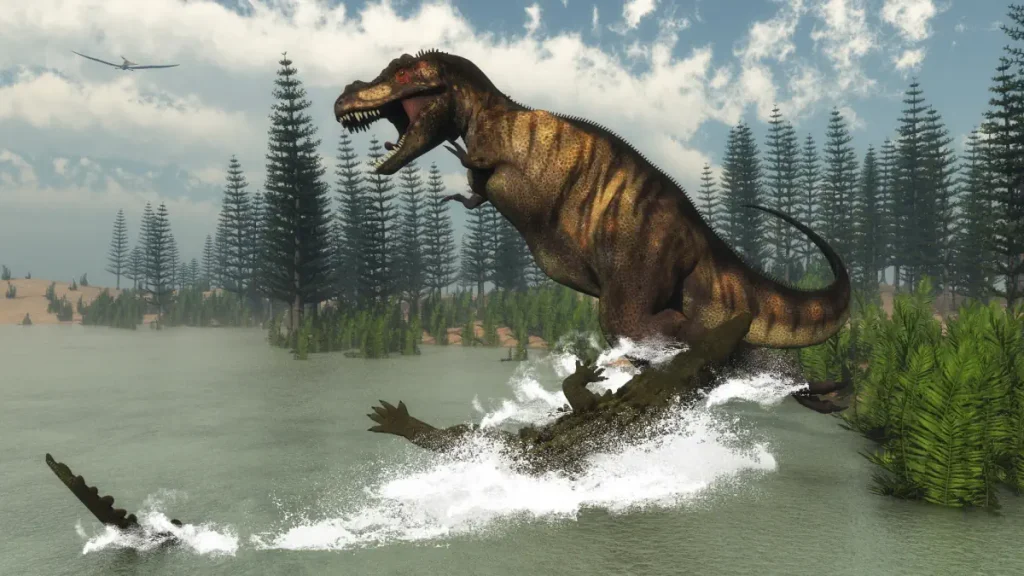
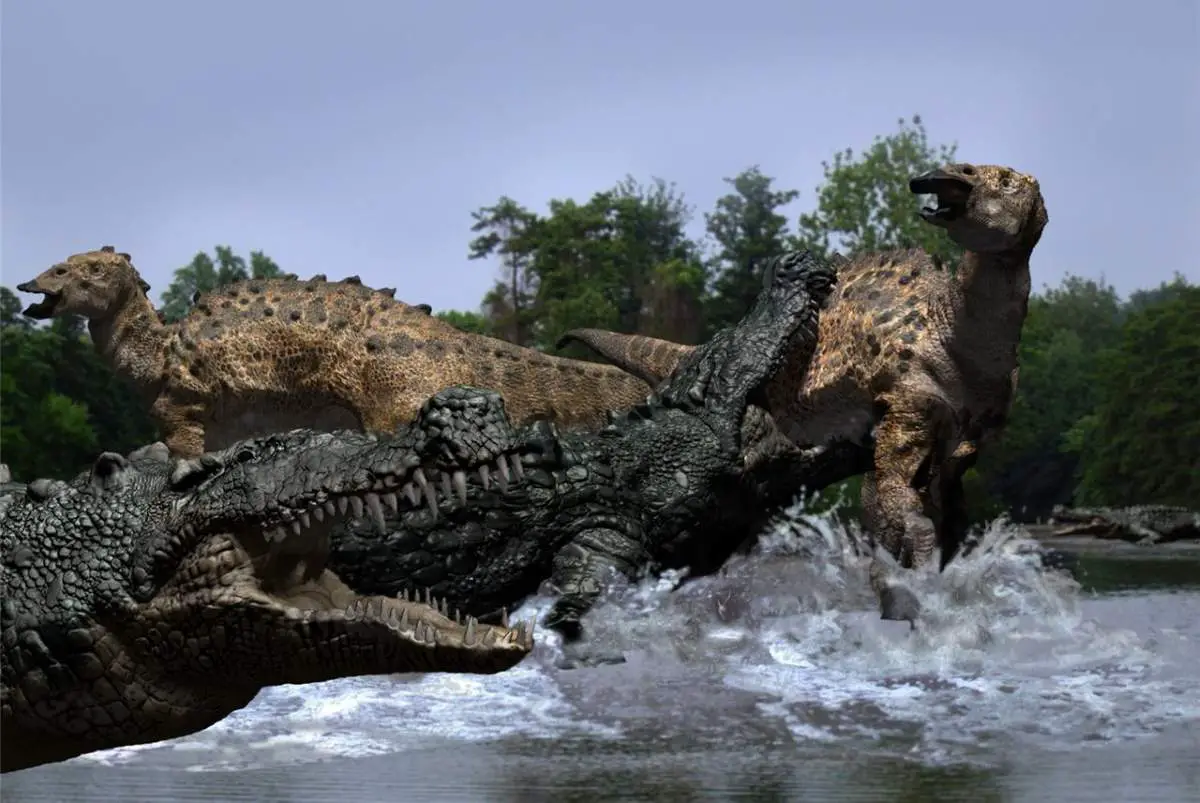
1. Aegisuchus (up to 15 meters/49 feet). The largest crocodile ever lived on Earth
Aegisuchus lived during the Late Cretaceous (100.5-66 million years ago). It is only known from a partial braincase, but even that part gives hints about its enormous size: its braincase is much larger in volume than that of any other crocodyliform (about 40 cm3 or 2.44 cubic inches). Based on this volume, we can compare the ratio of braincase to skull length in other crocodilians: the total skull length of Aegisuchus is estimated to have been 2.08 to 2.86 meters (6.8 to 9.4 feet) in length. So:
- If it had a long long snout like modern-day gharials, its total body length (from snout to tail) should be 15 to 21 meters (49 to 69 feet).
- If it had a short snout like today’s crocodiles its length should be a whopping 16 to 22 meters (52 to 72 feet)!
But, most scientists think that these calculations gave an (almost) impossible length for this prehistoric crocodilian. They think Aegisuchus was 15 meters (49 feet) in length at most. Still, this makes Aegisuchus the largest crocodile that ever lived on Earth.


Notes
- A Caiman is an alligatorid crocodilian belonging to the subfamily Caimaninae, one of two primary lineages within Alligatoridae, the other being alligators. Caimans inhabit Central and South America. They are relatively small crocodilians.
Sources
- Sarcosuchus on Wikipedia
- Euthecodon on
Wikipedia - Euthecodon
brumpti on AfricanFossils.org - Gryposuchus on Wikipedia
- Purussaurus on Wikipedia
- Caiman on Wikipedia
- Deinosuchus on Wikipedia
- Rhamphosuchus on Wikipedia
- Mourasuchus on Wikipedia
- 10 Facts About Sarcosuchus on dinasours.about.com
- Aegisuchus on Wikipedia
- How Many Elephants are Left in the World in 2025? - August 17, 2025
- Moon Landings: All-Time List [1966-2025] - February 2, 2025
- What Is Max-Q and Why Is It Important During Rocket Launches? - January 16, 2025
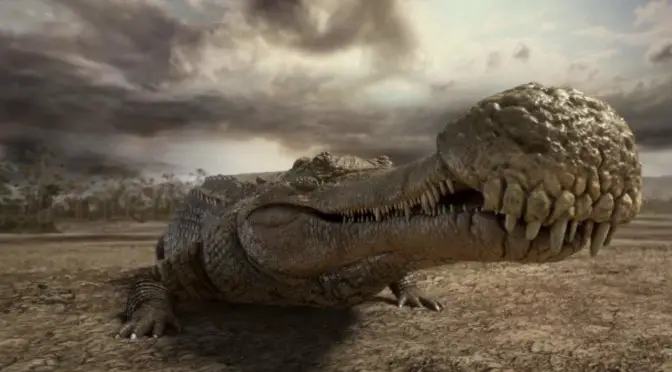
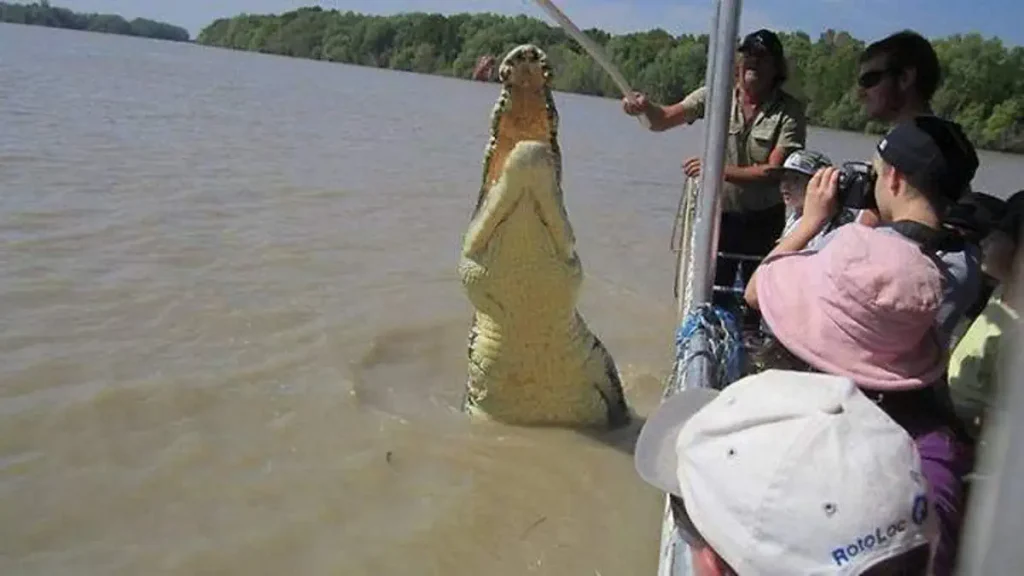
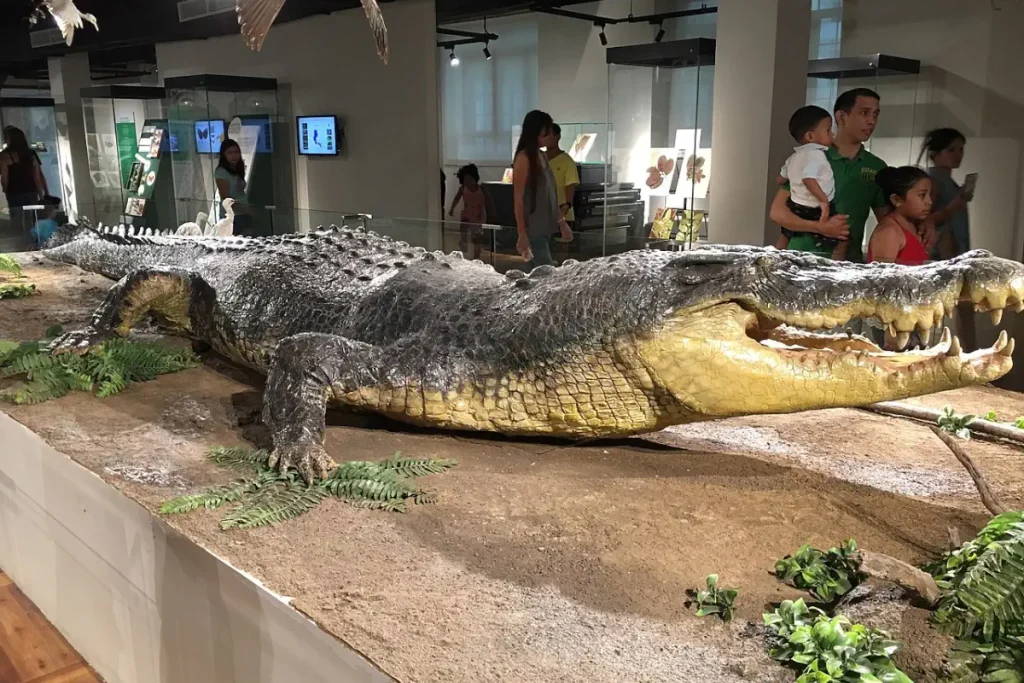
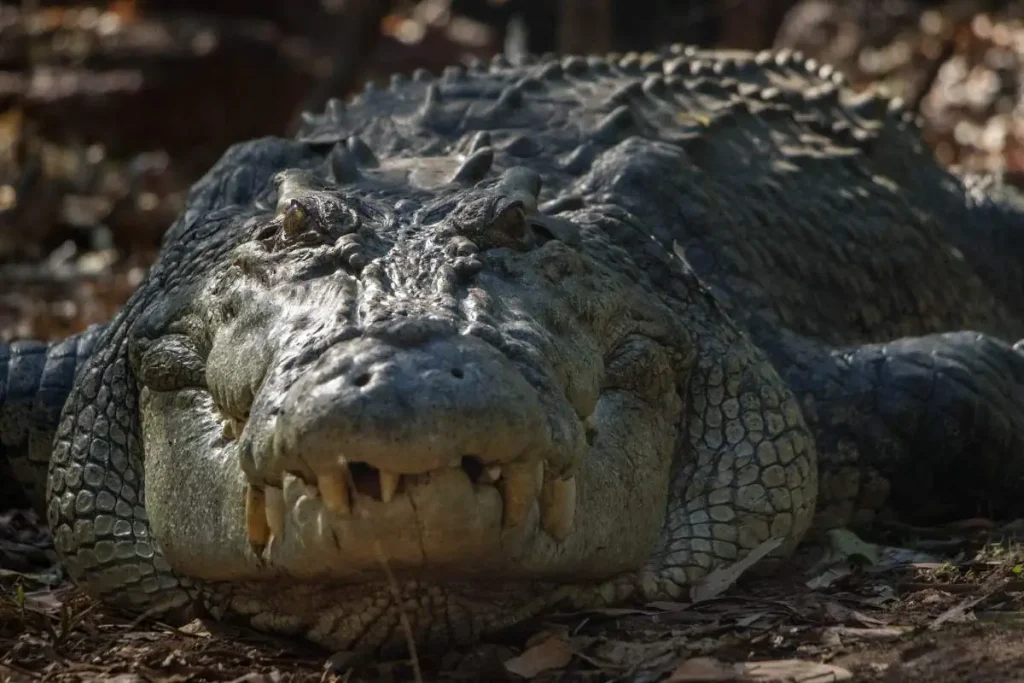
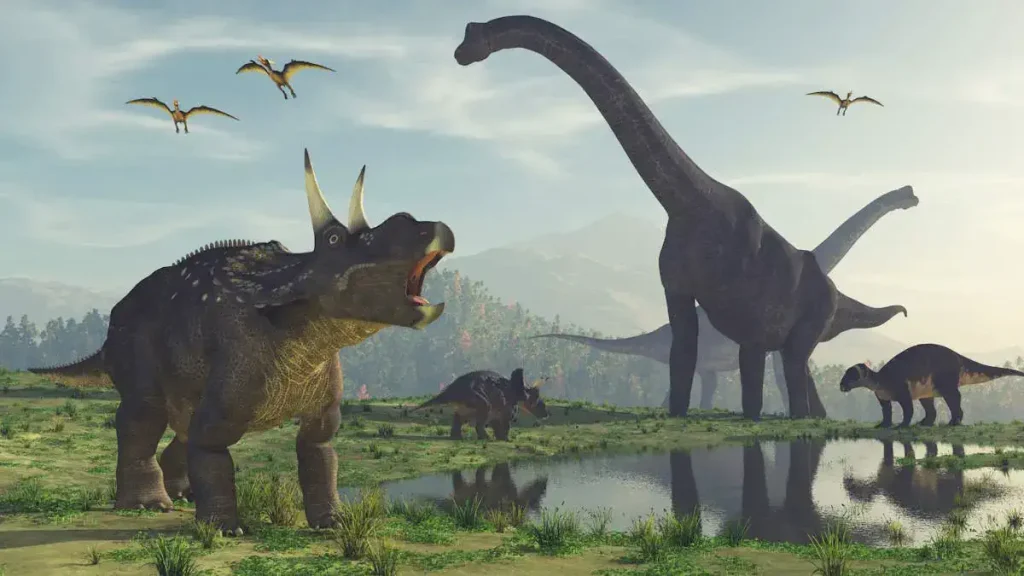
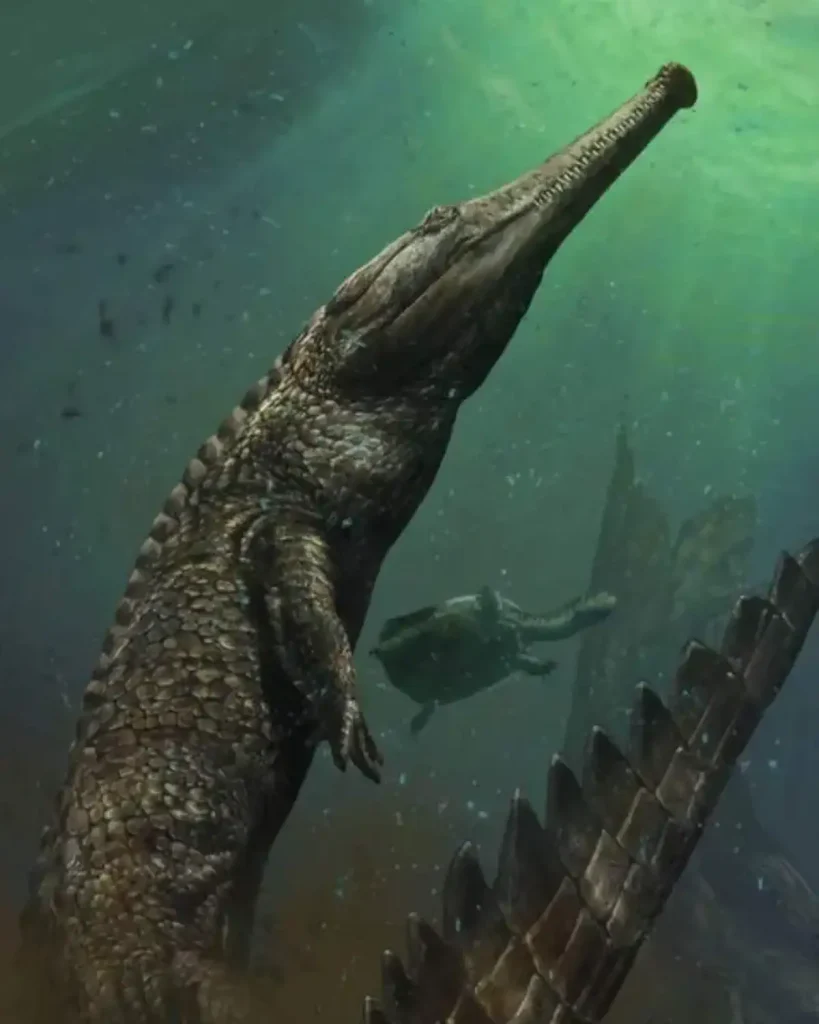
11 replies on “8 Largest Prehistoric Crocodiles Ever”
this article was very helpful. Thank you for writing and posting it! it helped settle a dispute among 3rd grade students in Osceola Mills, PA.
You’re welcome, Kim! Thanks for reading. I am glad it helped!
Yes, I think so.
Yeah… I also think that Sarcosuchus could eat dinosaurs.
Can’t compete with Tyrannosaurus Rex’s bite force!?!?!?!
T. Rex had a maximum bite force of 57,000N.
That’s nowhere near the pressure of 88,000N!
Furthermore…. where was the mighty Machimosaurus Rex???
Machimosaurus is said to be as large if not larger than Sarcosuchus Imperator.
Also, what about Sarcosuchus Hartii???
Either this is an old article and you’ve done well to cover yourself or you didn’t look into your studies enough.
Hi, Rhys
Thanks for the comment!
You’re right, the estimated bite force of T-Rex is about 57,000N. One study for 2003 puts it as high as 183,000 to 235,000 Newtons but I think it’s an exaggeration. So I fixed the article.
Yes, it is a bit an old article, but I don’t think the Machimosaurus Rex was bigger than Sarcosuchus. It is 30 feet long, shorter than Sarcosuchus.
I couldn’t find the size information of Sarcosuchus hartti, can you provide a source, please?
Many thanks
sarcosuchus has a stronger bite than t rex.
Nice, but the lowest estimate for Purussaurus is actually 10.3 m. Also, now we have a lower estimate for Sarcosuchus at 9-9.5 m as well.
Sarcosuchus is not the largest, Aegisuchus was even bigger. While most Ageisuchus only reach 26~ feet, there are some that reached a mind blowing 72 feet long.
Sarcusuchus can only get to 26ft-30ft
Thanks, it was an old post. Recent estimates scaled Sarcosuchus’ size down. Now fixed.